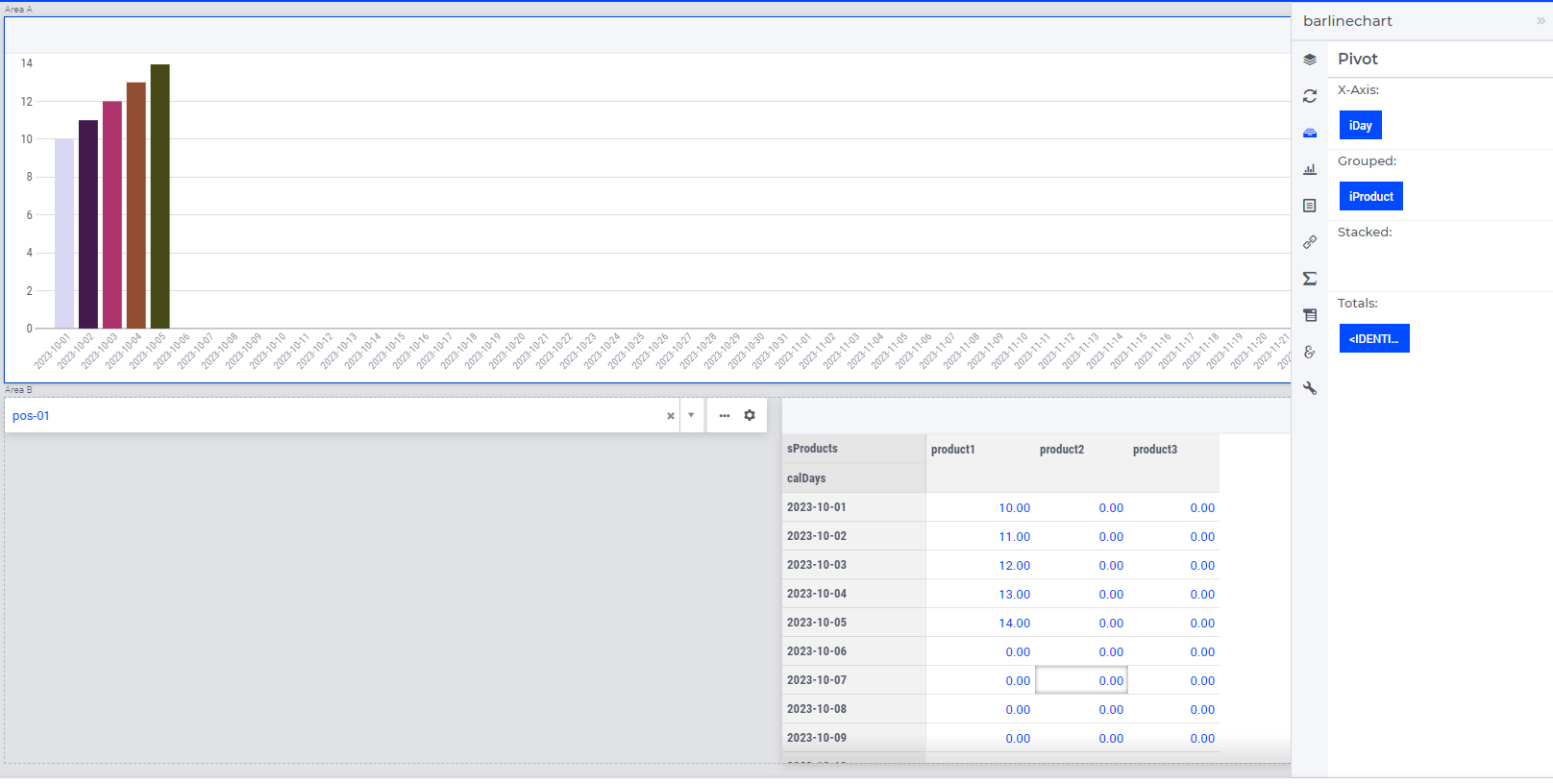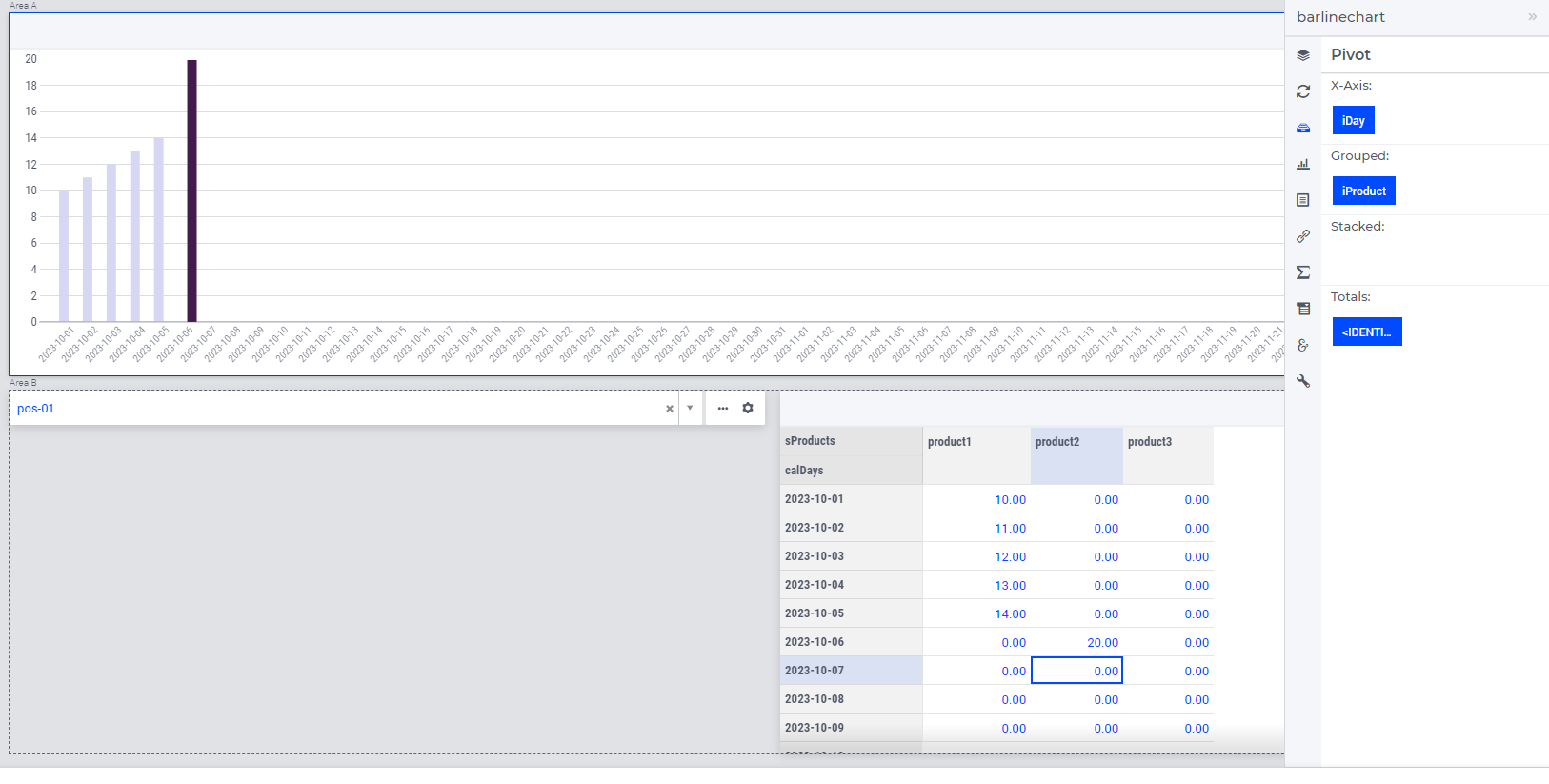Coloring, in (most) widgets, is using the ordinal numbers of the associated set elements of one specific index that plays a role in the widget. This is done by adding CSS classes like 'Mod16Ord5' (for set elements with ordinal number 5, 21, ..etc.) which are mapped to colors by the CSS color palette that is being used.
The bar chart uses a built-in, hardcoded heuristic to select this so-called 'color index'. The gist of this heuristic is: the color-index is
- the last index in the 'grouped' part (if any, and if the cardinality of entries in the 'grouped' part > 1), else
- the last index in the 'stacked' part (if any, and if the cardinality of entries in the 'stacked' part > 1). else
- the last index in the 'header' part (if any)
The reason we added the ‘if the cardinality of entries in the ‘...’ part > 1’ condition, is that in this case the color is not being used to differentiate the data being shown (on of the reasons people are using colors in charts in the first place), and we can probably find better use of the use of colors in the chart.
Btw, adding a 'fixed-element' or 'element-parameter' slice will effectively remove the associated index from a widget. As a result this index will not be used to determine the color anymore. In your example, this happens for the 'iStoragePosition' index.
In your example, because the widget is communicating sparse data, the widget is only seeing a single product that contains (non-default) data, as a result of which the 'iDay' index on the X-Axis is being used to color. Long story short, I would say the observed behavior is as intended (and not a bug).
In case you would set the display domain to 1, the widget will observe 3 products and the 'iProduct' index will again be used to color. However, this will have some less nice side-effects on the width of the bars being drawn.
We do realize that the built-in, hardcoded heuristic will probably not lead to the desired coloring in all use-cases. In case you want colors other than provided by the built-in, hardcoded heuristic described above, I would recommend, for now, to add some custom annotations.
In the combination chart we added an option that allows the app developer to explicitly specify the color-index, thereby allowing you to have more control over how the widget colors the elements in the chart. Once the color-index is extended to the bar chart widget too, you will be able to use that too.
Hope this helps!





